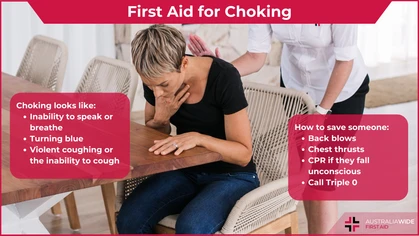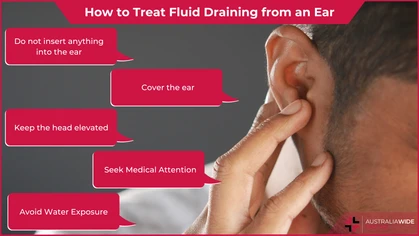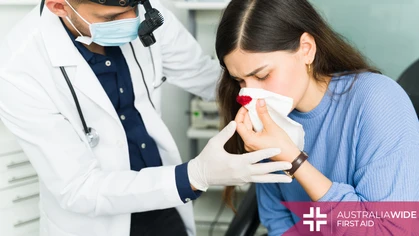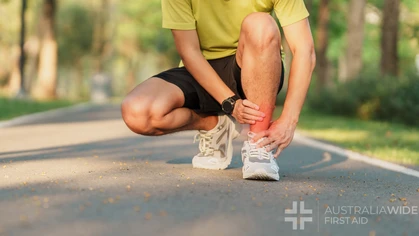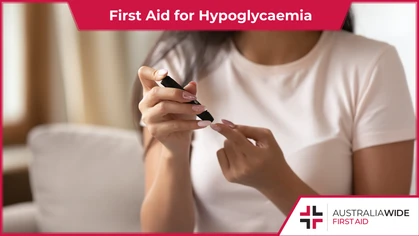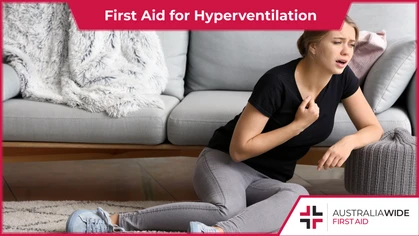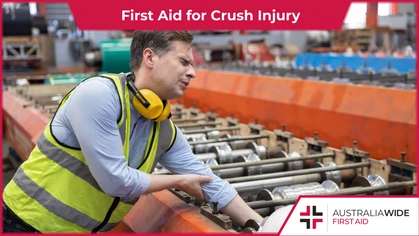Suicide Attempt First Aid

How-To

Suicide Prevention & Suicide First Aid
Covid-19 is having its impact on Australia — not only in terms of lives tragically lost to the virus but also because of its negative effects on mental health — too often, leading to suicide.Suicide Prevention & Suicide First Aid
The University of Sydney predicts suicide in Australia will increase by 25% over the next 5 years. Australia Wide First Aid courses don’t shy away from the spectre of suicide. Quick, decisive action can contribute to a life affirming turnaround for the would-be suicide. It may not always work out that way, but not for lack of trying on behalf of able first responders. We provide easy access for thousands of people who understand the value of first aid certification. And, although streamlined to serve the needs of busy schedules, our courses also stay mindful that first aid and suicide are not removed from one another. If the University of Sydney figures are anything to go by, it will mean 750 more Australian deaths per year. The projected death toll from Covid-19 is lower than this. Without doubt, it’s becoming increasingly important for us to know how to provide First Aid to people who have attempted to take their lives. But you can also see that knowing how to provide support for anyone contemplating suicide could be pivotal. Suicide Prevention starts by let the person know you care about their welfare. Ask if they are thinking of taking their own life in a gentle manner that invites discussion about it. There is plenty of evidence to show that, in most cases, people contemplating suicide don’t really want to die. Helping them to open up and be heard is important.Support for Suicide Prevention
Follow these 4 steps if you are concerned for someone who is considering suicide: Let the person know you care about their welfare. Ask if they are thinking of taking their own life in a gentle manner that invites discussion about it. There is plenty of evidence to show that, in most cases, people contemplating suicide don’t really want to die. Helping them to open up and be heard is important. 1) Listen and take what they are saying seriously. And don’t leave them by themselves. Scan the environment to make sure there’s nothing in the vicinity that they could use to self-harm, e.g. weapons, drugs, alcohol, or medicines. 2) If you conclude that their life is in danger, call emergency on 000. Or take them directly to hospital. If you suspect they could be talked out of taking their life by someone more qualified, you could find out if a GP or psychologist is available. Lifeline is available 24/7 on 13 11 14, as well as Kids Helpline on 1800 55 1800. 3) Follow up with the person regularly. Not only will you be able to check how they’re doing, you’ll also be letting them know there are people who care about them, that they’ve not been abandoned. Your follow-up should also include making sure a professional support network knows about them. You need to have people you can confide in about this, too. Your own mental health is just as important.First Aid Treatment for Suicide Attempts
In Australia, the most common ways people try to commit suicide include: falling, drug poisoning, hanging, drowning, firearms, and self-harming with sharp objects. We’ve listed how to provide first aid treatment for each of these below.Attempted Suicide with a Firearm
Check to make sure the scene is safe and call emergency services on 000. • Stop the bleeding. Use a dressing, such as gauze or a clean shirt, to seal the wound and apply pressure. • Elevate the extremity if it’s below the waist to help avoid shock. • If the wound is to a limb and bleeding too profusely, you may need to apply a tourniquet. • For gunshot wounds to the chest, plastic is a good alternative to seal the wound and, in the case of a collapsed lung, from taking in air.Attempted Suicide by Hanging
• Assess the scene to make sure it’s safe. • Remove anything constricting the victim’s neck. • Call emergency services on 000. • Place the victim gently on the floor and check for a pulse. If the victim is breathing, place them in the recovery position until emergency services arrive. If not, start CPR.Attempted Suicide by Poisoning or an Overdose
Check the scene is safe and the victim is alert. If unconscious, move them to the recovery position to avoid them choking on their own vomit. • Call emergency services on 000. • Assess the victim to determine if they are breathing and have a pulse. If not, start CPR. • Try to find the cause of the poisoning or overdose to help emergency services provide treatment for the victim.Attempted Suicide with a Sharp Object
Ensure the scene is safe and determine if the victim is responsive. • Call emergency services on 000. • Find and control the bleeding, applying pressure, as well as a dressing, such as gauze or a clean shirt. • Elevate the wounded area above the heart. • Use pressure to try to stop the blood flowing through the artery above the wound. • Once the bleeding stops, check breathing, circulation and airways.Attempted Suicide for Falls
Assess the scene is safe and check to see if they are breathing. If not, begin CPR. • Call emergency services on 000. • Assess how they’ve fallen and determine if they’ve injured their neck or spine. If so, do not move them. • For a neck or shoulder injuries, try to keep them still to avoid doing any further harm to themselves. • If you believe there’s no neck or shoulder injury, you can place them in the recovery position. • Should the fall victim start going into shock, force them to lie back and raise their legs. • Following the above First Aid tips for these common suicide attempts might turn somebody’s life around. Calling a help-line, such as Lifeline or the Kids Helpline, can be very effective during a suicide attempt. But, if you’re uncertain, call emergency services. Should the call fail to go to plan, you don’t want to risk things. We also recommend completing a first aid course through Australia Wide First Aid at any of our training venues around Australia. Our first aid trainers are industry experts and have extensive knowledge in applying first aid for and providing support following a suicide attempt or any other medical emergency. Contact us today if you’d like to find out more about first aid and CPR courses, that can be tailored to suit business or personal demands.
Originally published at
https://www.australiawidefirstaid.com.au/resources/suicide-prevention-first-aid-treatment
as part of the Australia Wide First Aid Articles Library
